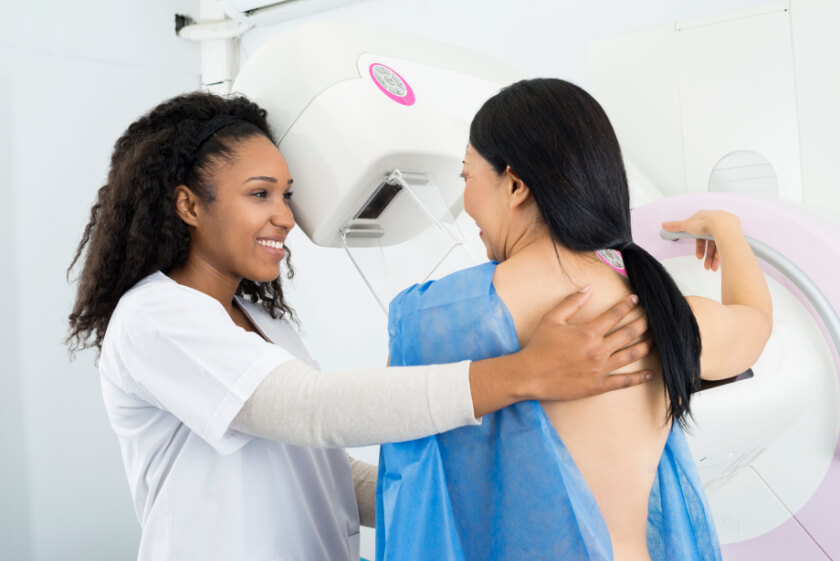
When it Comes to Reducing the Odds of Dying from Breast Cancer, Consistency is Everything
Mammograms save lives by detecting breast cancer before the masses can be felt by the patient or the doctor. Breast cancer screenings are not a “one and done” proposition, though – the result of a new study suggests that consistency is the key.
More specifically, the study found that the closer a woman adhered to breast cancer screening guidelines, the less likely she was to die from breast cancer.
Breast cancer is a common type of cancer among women in the United States, according to the Centers for Disease Control and Prevention (CDC). In fact, breast cancer is second only to some types of skin cancer. Breast cancer accounts for about 30 percent of all new cancer cases in women. Each year, doctors diagnose about 264,000 new cases of breast cancer among women, and about 42,000 women die of breast cancer each year.
Mammograms can help save lives by detecting breast cancer early, while it is most responsive to treatment. Like other types of cancer, breast cancer is characterized by the rapid growth of abnormal cells. In its earliest stages, the abnormal cells are confined to breast tissue. Left untreated, the abnormal breast cells can spread to lymph glands and other nearby tissue. These abnormal cells interfere with the function of healthy cells. In its later stages, the abnormal breast cells can travel to organs and tissues far from the breasts to cause dysfunction there.
Breast Cancer Screening Guidelines
Breast cancer screenings and improvements in treatment have saved more than a half million lives since 1989, according to American Cancer Society estimates. From 1975 to 1990, the mortality rates from breast cancer rose by 0.4 percent each year. In the 30+ years since, breast cancer mortality rates dropped to between 1.8 and 3.4 percent. Clearly, breast cancer screenings and prompt treatment save lives.
A mammogram is a simple procedure. During a mammogram, a technician gently places the patient’s breast on a flat support plate then compresses the breast with a parallel plate to flatten the breast tissue. The mammogram machine then produces a short burst of x-rays that pass through the breast to a detector on the opposite side. The x-rays produce a picture that a radiologist reviews for signs of breast cancer.
Unfortunately, many women do not get mammograms as recommended. The United States Preventive Services Task Force (USPSTF) is a group of doctors, nurses, radiologists and other medical professionals who look at statistics and research, and make recommendations on the best way to find diseases early or to avoid diseases altogether. The USPSTF recently updated their recommendations for breast cancer screenings. The group now recommends that women who are aged 40 to 74 years and who are at average risk for breast cancer undergo screening mammography every two years.
Only about 67 percent of women over the age of 40 have had a mammogram in the previous two years. Women skip this important screening test for a variety of reasons – some may not have insurance, for example. Other barriers include limited access to care, lack of a healthcare provider, fear of bad news, and even cultural or language differences.
While skipping breast cancer screenings altogether can increase the risk of going undiagnosed, rescheduling can also be detrimental as any delay extends the time between the previous mammogram and the next one. If a woman has developed breast cancer, even slight delays can increase the risk of being diagnosed with a more advanced case of breast cancer, which may be life-threatening.
Study Shows Consistent Breast Cancer Screenings Cuts the Odds of Dying of the Disease
An international research team recently investigated whether regular breast cancer screenings could reduce the odds of dying from the disease. The researchers looked at data on more than 37,000 women from nine Swedish counties who were ages 40 to 69 years old, and who were diagnosed with breast cancer between 1992 and 2016. Each woman enrolled in the study had between one and five opportunities to have a mammogram. Of these participants, 4,564 subsequently died of breast cancer.
The scientists gathered information on each participant. They obtained information on the participants’ screening data, for example, and whether the patient survived the cancer or not.
The researchers found that women who participated in all five screening exams had a much lower risk of death from breast cancer compared with women who did not undergo mammography at all during the study period. More specifically, a woman who had all 5 mammograms was 72 percent less likely to die of breast cancer than a woman who did not have any breast cancer screenings.
For more information on breast cancer screenings and ways to cut your odds of dying from the disease, consult with your doctor or radiologist. Your healthcare team can help you determine how often you should undergo mammography and other screening tests.




